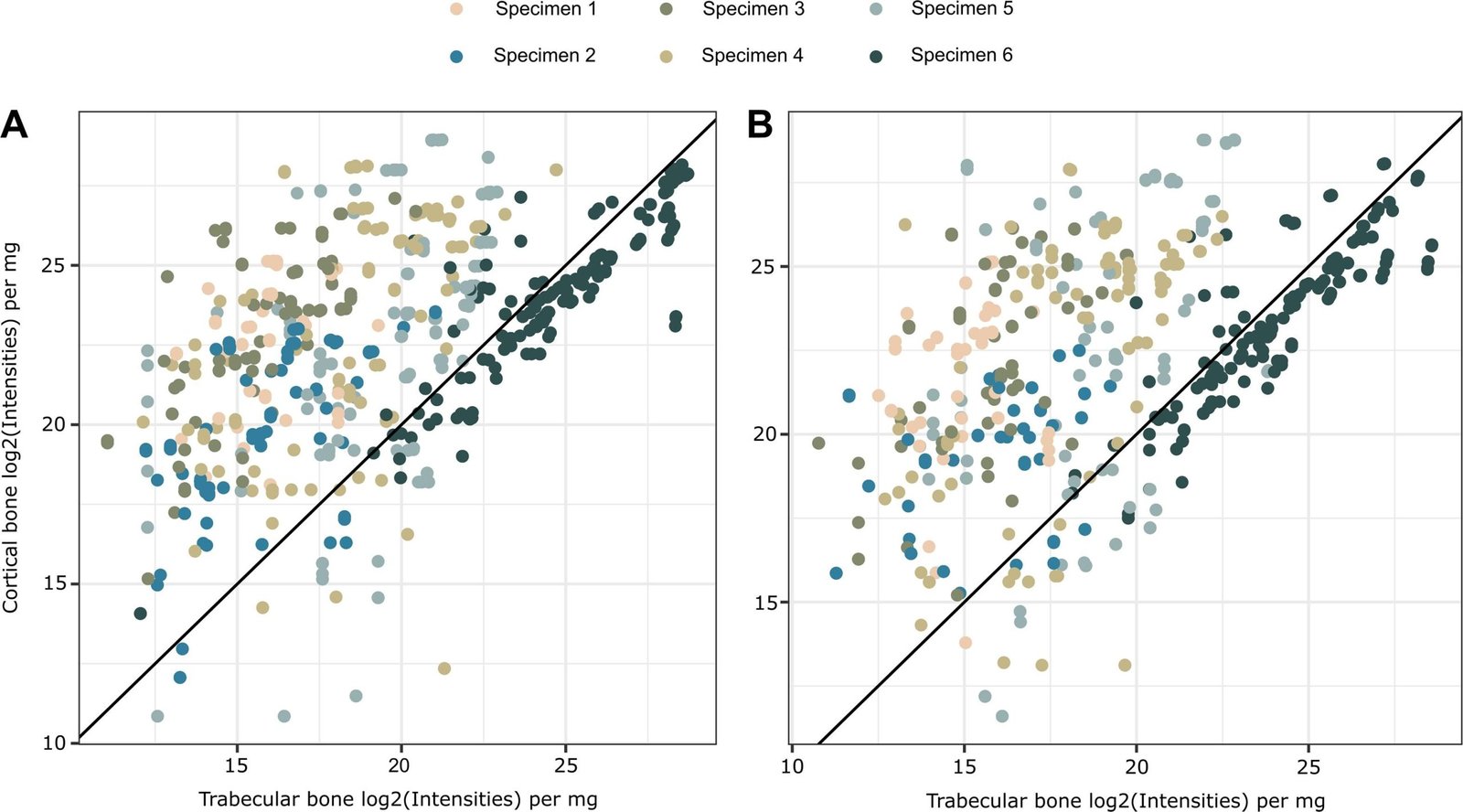Skeletal sample selection for evolutionary palaeoproteomic studies is currently based on the availability of material, without taking into account the influence of bone biology on the proteome composition of living bone. A prime example concerns the cortical and trabecular bone that is present simultaneously in many skeletal elements, including those recovered from archaeological sites. These two bone components are formed and maintained in different manners and at different rates. In palaeoproteomics there is currently no empirical data demonstrating differences in composition and/or preservation of cortical and trabecular bone proteomes. Here we analyse pairs of cortical and trabecular bone from six Early Holocene ungulate rib specimens from the site of La Draga, Spain, using shotgun proteomics. We observe generally larger proteomes, a larger number of peptides, and lower rates of degradation, for the cortical bone samples compared to the trabecular bone samples. These results suggest that in degraded proteomic contexts, preference should be given to the sampling of cortical bone in order to maximise the retrieval of larger and better-preserved bone proteomes.


